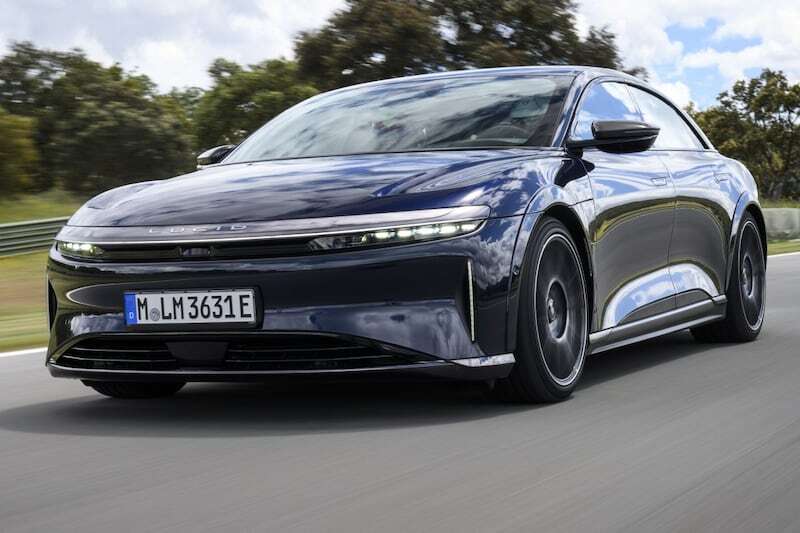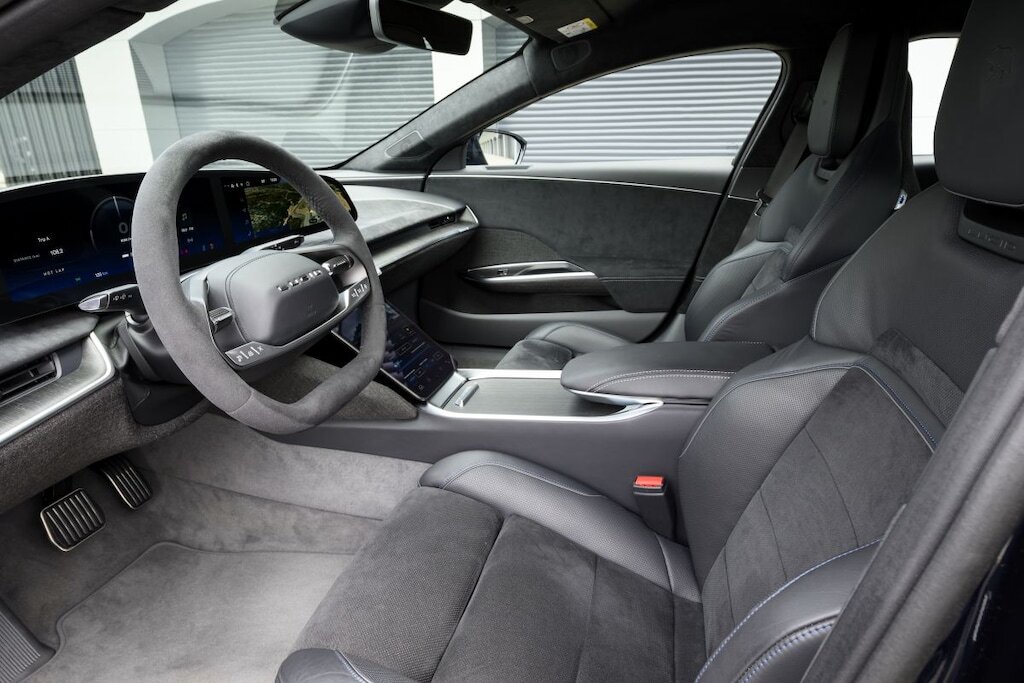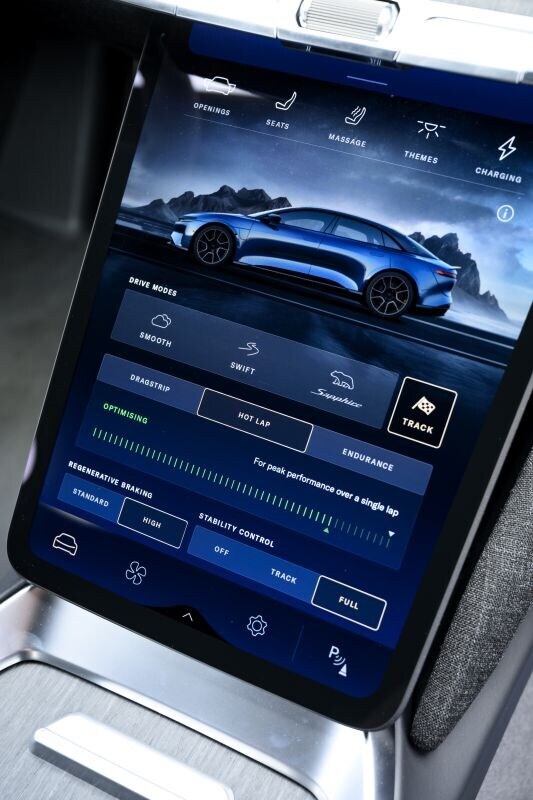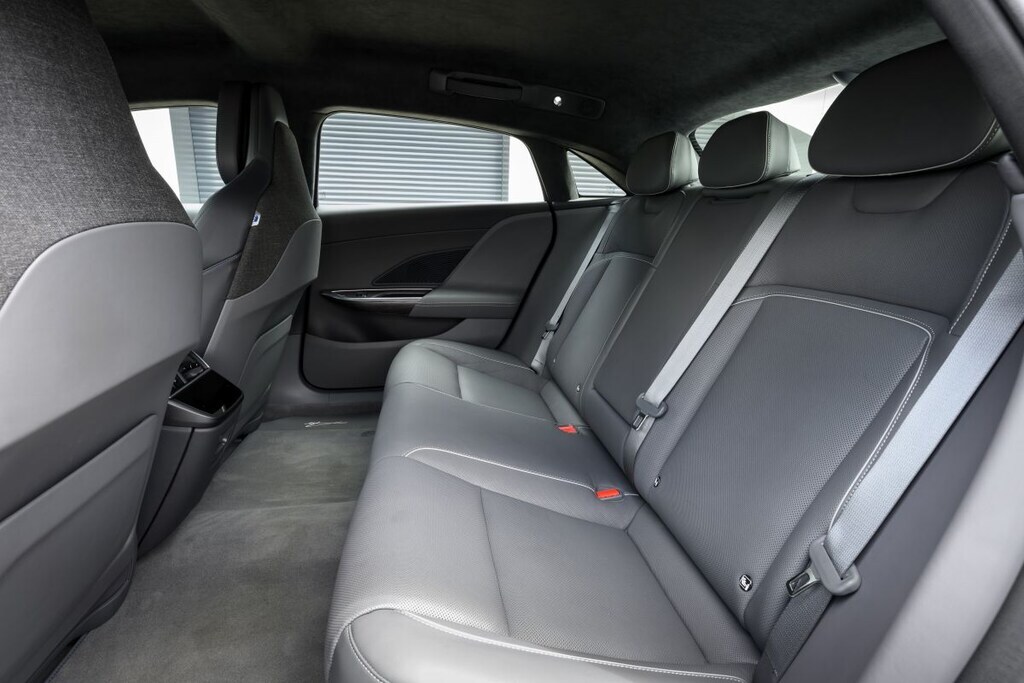
What is the Lucid Air Sapphire in this test for a car?
The Lucid Air Sapphire in this test is the most powerful version of the Lucid Air. 1,251 hp strong to be precise, although we cannot use it all at the moment, we are driving on Ascari Raceway, the circuit in Spain that was once built near Ronda by the Dutchman Klaas Zwart. It is actually a combination of the most beautiful corners of various circuits worldwide and especially the last part is very technical. Partly for this reason we are not allowed to unlock the full power of the Lucid, so we have to make do with ‘only’ about 880 hp instead of all 1,251 horses. Still, when we turn onto the straight and ‘accelerate’, the Sapphire does not disappoint. The three engines of our test car make a slightly higher whirring sound, but that barely rises above the – also barely audible – wind noise. We are nicely sunk into the comfortable travel seats of the Lucid Air and get the feeling that we are touring at slightly above-average speeds. But then our eye falls on the speedometer, which indicates 240 km/h. When we look up from the speedometer we see that the end of the straight is approaching us at warp speed and we know that a hairpin bend follows.

The Lucid Air Sapphire is nice inside, but not an S-class.
The Lucid Air Sapphire is so fast, how does the car do in the corners?
The best word to describe cornering in the Lucid Air Sapphire would be ‘underwhelming’. With a firm step on the brake pedal, the Lucid comes to a stop quickly but without drama, after which the right pedal quickly and decisively transmits commands to the chemical cell structure of the gigantic battery pack that is under us. Again we shoot forward as if we are being pulled by a giant elastic band.
Conclusion: the Lucid Air Sapphire rounds corners quickly and efficiently, but with little sensation. It is as if you are in a roller coaster of which all parts are covered with cotton balls. That, combined with the fact that you are in a 2,420 kilogram car with the comfort and interior space of a Mercedes S-class, makes it hard to believe that this car can compete on the track with the fastest and most ‘racy’ street cars ever built.

The Lucid Air Sapphire can be set up reasonably tame, or very wild.
Is the Lucid Air Sapphire really as spacious as an S-class?
Lucid itself says about the Air Sapphire that it is an E-class on the outside, but an S-class on the inside. That could be true, certainly behind, but getting in and out is less generous. The door opening is relatively small and low, so that as an older driver you unconsciously start thinking about the benefits of an SUV. The seats are wonderful, the steering is one of the best we have ever felt in an electric car and the carbon fiber brakes feel good and decisive. They have no trouble bringing this colossus to a stop quickly and without drama or squealing. We also have some criticism. For example, on the fact that the passenger door creaks on two different cars. Also, some trim strips along the passenger seat were carelessly attached and on a third copy the seat belt indicator kept clicking, even though the seat belt was fastened. And when it comes to quality perception, the door panels in particular could have felt more solid. They will undoubtedly last for centuries, but are made of very light plastic and feel as if they could break. The design of the interior and exterior appearance is fine, but not extraordinary and as the driver of a 2.5-ton car you want to distinguish yourself from Chinese ready-made models. Oh yes, if you want to tow a caravan, you have to shop elsewhere, because a tow bar is not possible.

The space in the back seat of the Lucid Air Sapphire is not the problem, the seating is a bit curious.